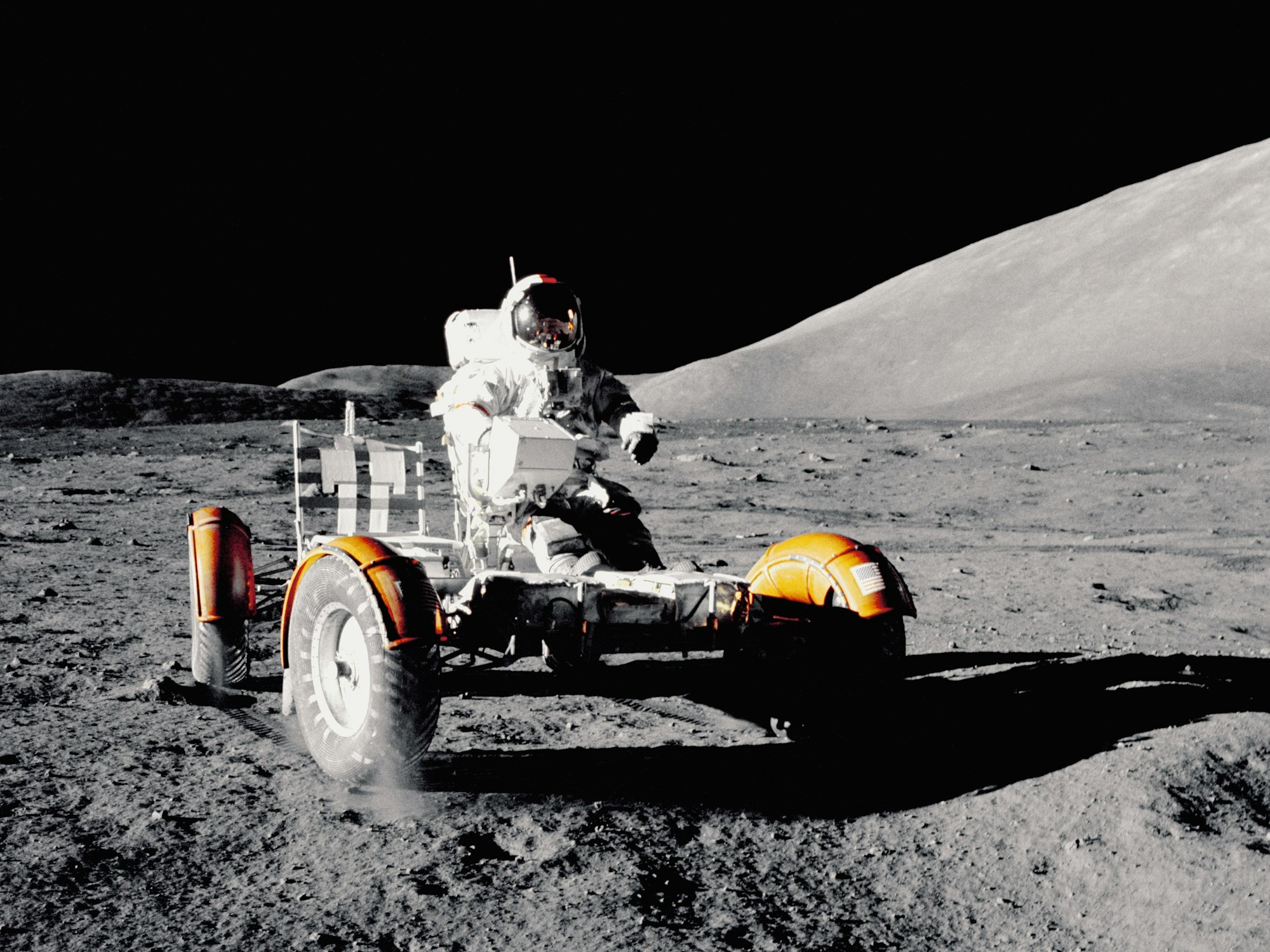Starting is hard. Let's face it, not everyone wakes up with a fire in their belly and a hunger for productivity. Some of us need a little extra push to get going, whether it's a cup of coffee, a quick workout, or a motivational speech. But have you ever wondered why that is? The answer lies in the science of activation energy.
What is Activation Energy?
Activation energy is the amount of energy required to initiate a reaction or process. In simple terms, it's the mental effort or motivation required to start working on a task. The amount of activation energy required can vary depending on factors like the difficulty level of the task, time pressure, and even our own intrinsic motivation.
Think about lighting a match. Without any energy to initiate the chemical reaction, nothing will happen. But if you strike the match firmly against the strip, you generate the friction and heat needed to set the match ablaze. You've just provided enough energy to cross the activation energy threshold and initiate the reaction.
The same principle applies to our productivity. The more energy we put into starting a task, the more likely we are to succeed.
The Importance of Activation Energy
When we consider the data that reveal many people struggle to start or finish a task, the relevance of activation energy becomes evident. Without enough activation energy, it's practically hard to put in the effort required to start and finish a task. Understanding and acknowledging the importance of activation energy is critical for increasing productivity and success.
So the question becomes, how do we lessen the activation energy needed to perform a certain task? The first step is to simplify the procedure. Examine your tools and procedures and remove any stages that are unnecessary. Ask yourself and others whether there is a simpler way to achieve things.
It's also important to make sure you have enough energy to start an activity. Getting enough rest is the most effective way to make sure you have enough energy to start a task. Getting a good night's sleep before starting a new project or habit will greatly improve your chances of success.
Another approach is to break the task down into smaller, more attainable objectives that demand less activation energy. Instead of focusing on a single huge goal, prioritise smaller, more attainable goals. Once you've begun, you'll often find yourself inspired enough to continue. Instead of an entire chapter, concentrate on one page. Set a five-minute timer instead of committing to an hour of creative writing.
However, minimising the amount of energy necessary to begin is not the only way to apply the activation energy principle. Catalysts can also be utilised to aid the desired figurative chemical reaction.
Building Better Habits Activation Energy
Just like every chemical reaction has an activation energy, every habit or behavior has an activation energy. The higher the activation energy, the more difficult it is to establish the habit. But by understanding the science of activation energy, we can take steps to lower the energy required to start and build better habits. So, the next time you're struggling to get started, remember the power of activation energy and push yourself to light that match.
Activation energy is a concept that can be applied to both chemistry and human behavior. In chemistry, activation energy is the amount of energy required to initiate a chemical reaction. In human behavior, activation energy refers to the effort required to start and maintain a habit or behavior.
Think of it this way: starting a habit of doing one pushup a day requires minimal effort and activation energy while committing to 100 pushups a day requires significantly more effort and activation energy.
One common pitfall when trying to form new habits is misaligning goals with habits. It's easy to get caught up in the excitement of a big goal and try to overhaul your entire life with new ambitious practices. However, big goals often require big activation energy, which can be difficult to sustain over time.
The solution is to focus on smaller, more manageable habits that require smaller amounts of activation energy. These habits may not bring about life-changing outcomes overnight, but they are more sustainable in the long run. When it comes to forming new habits, remember that consistency is key, and smaller habits with lower activation energy are more likely to stick.
Every habit requires activation energy to begin. The smaller the habit, the less effort is required to begin.
How Catalysts Can Help You Lower Activation Energy and Drive Change
Just as a chemical catalyst speeds up a reaction, catalysts in life can help us lower the activation energy required to drive change. These catalysts can take many forms, such as a mentor, accountability partner, or supportive network.
Having someone who provides guidance, encouragement, and accountability can help us overcome the barrier of activation energy and take action toward our goals. This makes the process of change easier and more manageable.
But you don't need to wait for someone else to be your catalyst. You can be your own catalyst, too. By setting clear goals, creating a plan, and taking small steps toward your desired outcome, you can lower the activation energy required to initiate change.
Visualising your desired outcome and focusing on the positive impact of your actions can also provide motivation and increase your internal drive.
Change is not a one-time event, but a continuous process of learning, adapting, and growing. Patience and persistence are key, and setbacks and failures are a natural part of the journey.
Don't let activation energy hold you back. By finding catalysts in your life or becoming a catalyst for yourself, you can overcome the challenges and take action toward your goals. Embrace change, and let the power of activation energy and catalysts work for you.
How Innovation Sparked at Bell Labs
Bell Labs was an early-stage firm that leveraged proximity to succeed. AT&T launched Bell Labs in 1925 for research and development. The company was noted for its innovative and creative culture.
Bell Labs in New Jersey employed scientists, engineers, and mathematicians from several fields. The proximity of these individuals allowed for a free flow of ideas and information cross-pollination, which aided in the development of a culture of creativity and experimentation.
In 1947, William Shockley, John Bardeen, and Walter Brattain devised the transistor, one of Bell Labs' greatest achievements. The transistor was a game changer that transformed the world of electronics by enabling for the development of smaller and more efficient devices.
The Bell Labs team's proximity and the stimulating environment that they generated were critical in the creation of the transistor. Sharing ideas and working together accelerated technology progress. The team's proximity helped them iterate and enhance their ideas, speeding up development.
Bell Labs shows how closeness can create an invigorating environment or activation energy. The team's close proximity and the energetic environment they created were critical in promoting innovation and creativity, resulting in a remarkable breakthrough in the field of electronics.
The Misalignment of Goals and Habits
Here's a common issue I've encountered while attempting to form new habits.
Align your goals with your habits. Instead of focusing on the end result, focus on the small daily actions that will get you there.
For example, instead of setting a goal to lose 50 pounds in 6 months, set a goal to eat healthier and exercise consistently for 30 minutes a day. These small daily habits will lead to weight loss over time, and the activation energy required to start each day is much lower.
Another example is instead of setting a goal to write a novel in a year, set a goal to write 500 words a day. The small daily habit of writing will add up over time and eventually lead to the completion of a novel.
By focusing on small daily habits, you're not only lowering the activation energy required to start each day, but you're also increasing the likelihood of consistency and sustainability.
So, don't let the misalignment of goals and habits hold you back. Remember that small daily habits lead to big results over time. Align your goals with your habits, lower the activation energy required to start each day, and watch as you achieve your desired outcomes.
When setting habits, it is important to align them with the goals, as big goals frequently necessitate big activation energy, which can make them hard to maintain consistency over time. By aligning habits with the goals, you are lowering the activation energy required to start each day and increasing the likelihood of consistency and sustainability.
How to Harness the Power of Activation Energy
Now that we understand the science of activation energy, it's time to harness its power and start using it to our advantage. Here are a few practical tips for reducing the amount of activation energy required to start and finish a task:
- Break down the task into smaller, manageable chunks: As mentioned earlier, breaking a task down into smaller, more manageable goals can make it much easier to start and finish. This is because the activation energy required for a smaller task is much less than that of a larger task.
- Prioritise your to-do list: Prioritising your tasks based on importance and urgency can help you focus on the most important tasks first. This can help you overcome the initial hurdle of starting a task by making sure you're working on something that truly matters.
- Create a routine: Establishing a routine can help you build momentum and make it easier to start tasks. By doing the same thing at the same time every day, you'll be able to reduce the activation energy required to start a task.
- Use a trigger: Triggers can be a powerful tool for getting started on a task. A trigger is something that prompts you to take action. For example, you might set an alarm to remind you to start working on a task or use a specific song to signal the start of a task.
- Find accountability: Having someone to hold you accountable can help you overcome the initial hurdle of starting a task. Find someone you can check in with and report your progress to. This can help you stay motivated and focused on your goals.
The Power of Momentum
Once the activation energy threshold has been crossed and the task has been started, momentum begins to build. The more we work on a task, the more energy and motivation we have to continue. This is why it's often easier to keep going once we've started. The key is to harness the power of momentum and use it to our advantage.
One way to do this is to set a timer for a short period of time, say 15 minutes, and commit to working on the task for that amount of time. Once the timer goes off, you can decide to continue working or take a break. The important thing is that you've started and momentum has begun to build.
Another strategy is to establish a routine or schedule. By dedicating specific times of the day to work on certain tasks, we can create a sense of routine and predictability. This makes it easier to start and build momentum.
Activation energy is the key to getting started and becoming more productive. By understanding and recognising the role of activation energy, we can take steps to lower the energy required to start and build better habits. The power of momentum is also an important factor in keeping us going once we've started. So, the next time you're struggling to get started, remember the science of activation energy and harness the power of momentum to work smarter and achieve more.
Conclusion
Activation energy plays a crucial role in determining whether or not we take action towards our goals. But despite its importance, the concept of activation energy doesn't require a deep understanding of chemistry.
By applying the basic principle of activation energy, we can tap into a valuable mental model that helps us get started on the tasks that matter most. It's amazing how human behaviour can mirror what happens on a microscopic level.
By comprehending the nature of activation energy and its impact, we can use various strategies to increase our motivation and achieve our goals. Whether it's through finding external catalysts or becoming a catalyst for ourselves, the right amount of activation energy can propel us toward success.
So don't let the complexity of the scientific concept hold you back. Harness the power of activation energy and start making progress toward your aspirations today.








